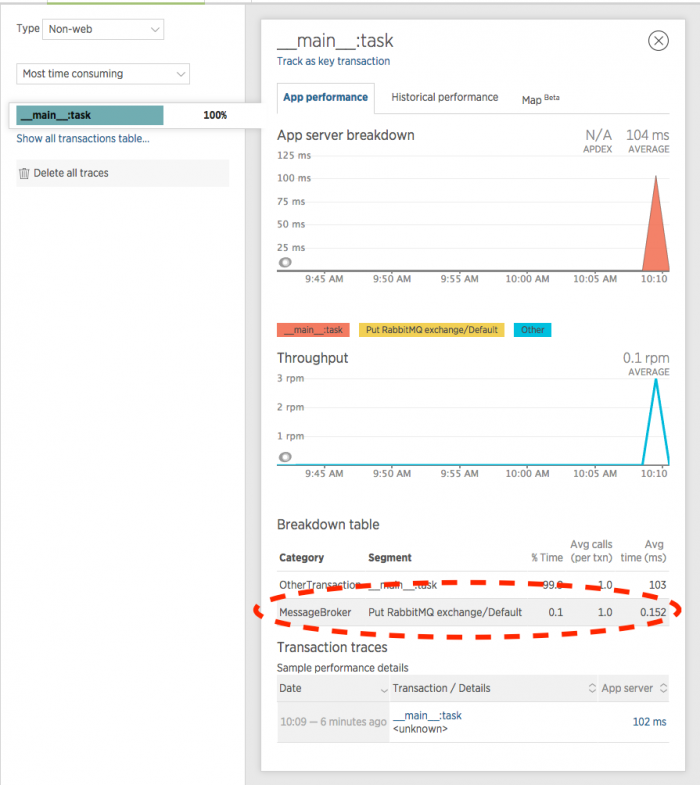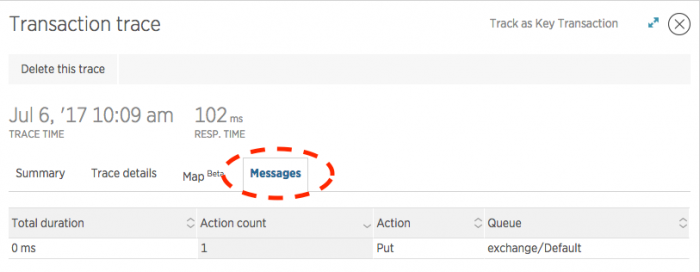The Python agent supports the Pika RabbitMQ client library, giving you visibility into the performance of your message processing, for both incoming and outgoing messages.
The New Relic UI will show transactions initiated via RabbitMQ message receipt (subscribe/consume messages) as Message background tasks. Message creation via RabbitMQ also appears in transaction traces.
Requirements
Requires Python agent version 2.88.0.72 or higher.
Caution
Message tasks are not started for consumers using TornadoConnection.
Performance improvements with background tasks
One way to increase responsiveness of web applications is to delegate work to background processes. Message queues are commonly used for this inter-process communication.
In the context of message queuing systems, applications typically interact with message brokers to send and receive messages. The RabbitMQ Pika client library allows Python applications to interface with message brokers that implement the Advanced Message Queueing Protocol (AMQP) 0.9 or higher.
The Python agent shows messages sent and received using the RabbitMQ client library. With this visibility, you can see details including:
- Number of messages produced by your app
- Time your app spends publishing messages
- Time your app spends processing "consumed" messages
APM conveniently groups and reports operations that interact with queues. By analyzing this information, you can more easily identify bottlenecks and areas for performance improvement in your message passing architecture.
Queue operations
Supported entry points for queue operations appear as Put (publish a message) or Take (receive a message) in APM's user interface.
Queue operations | Publish a message ( | Receive a message ( |
|---|---|---|
RabbitMQ |
|
|
View in New Relic UI
Queue operations appear on APM's Transactions page for the selected app. The Put and Take metrics appear in the Breakdown table and are categorized as MessageBroker metrics. Here is an example:

one.newrelic.com > APM > (select an app) > Monitoring > Transactions > (select a transaction): The transaction’s Breakdown table categorizes queue operations as MessageBroker metrics and labels them as Put (publish a message) or Take (receive a message).
Transaction traces also provide additional details for messages.
Tip
You can select transaction traces from the app's Summary or Transactions pages in APM.
The Transaction trace summary page may show Put and Take operations in the Slowest components section. For example:

one.newrelic.com > APM > (select an app) > (select a transaction trace): In this example, the selected transaction trace's Summary shows RabbitMQ operations in the colored bar chart. The Slowest components section also lists the RabbitMQ Put and Take results.
The Transaction trace page includes a dedicated Messages tab that shows a summary of the message activity that occurred as part of the transaction. Here is an example:

one.newrelic.com > APM > (select an app) > (select a transaction trace): In this example, the selected transaction trace's Messages tab lists the RabbitMQ message details.